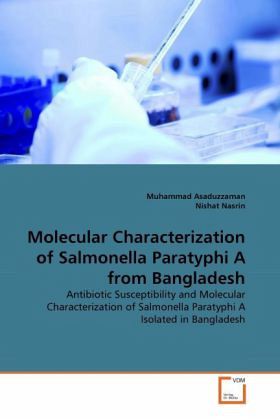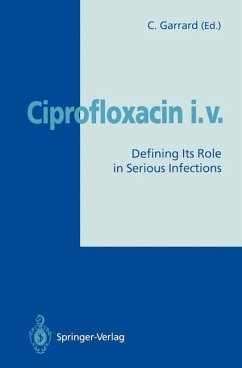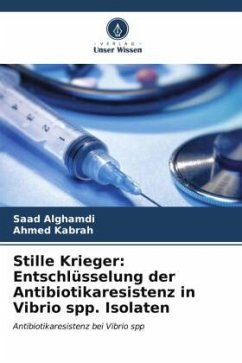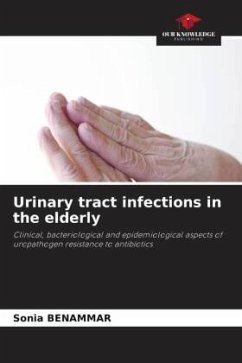
Molecular Characterization of Salmonella Paratyphi A from Bangladesh
Antibiotic Susceptibility and Molecular Characterization of Salmonella Paratyphi A Isolated in Bangladesh
Versandkostenfrei!
Versandfertig in 6-10 Tagen
32,99 €
inkl. MwSt.

PAYBACK Punkte
16 °P sammeln!
Strains of Salmonella Paratyphi A isolated from the patients admitted to the diarrhoea treatment center of ICDDR, B were characterized both at the phenotypic and genotypic levels. Antibiotic susceptibility test revealed that 61% of the strains (n = 19) were sensitive to all the antibiotics used for empirical treatment of paratyphoid fever and 32% strains (n = 10) were resistant only to nalidixic acid. Most of the strains that showed reduced susceptibility to ciprofloxacin, having elevated MIC value (0.5µg/ml). A point mutation in the gyrA gene was observed at codon 83 (TCC to TTC), which subs...
Strains of Salmonella Paratyphi A isolated from the patients admitted to the diarrhoea treatment center of ICDDR, B were characterized both at the phenotypic and genotypic levels. Antibiotic susceptibility test revealed that 61% of the strains (n = 19) were sensitive to all the antibiotics used for empirical treatment of paratyphoid fever and 32% strains (n = 10) were resistant only to nalidixic acid. Most of the strains that showed reduced susceptibility to ciprofloxacin, having elevated MIC value (0.5µg/ml). A point mutation in the gyrA gene was observed at codon 83 (TCC to TTC), which substitutes phenylalanine for. This clearly indicates that a significant number of the S. Paratyphi A strains with reduced susceptibility to ciprofloxacin has been evolved. Of 31 strains, 16 (52%) of S. Paratyphi A strains harbored 35 MDa middle-ranged and non-conjugative plasmid. Pulse-field gel electrophoresis (PFGE) revealed that most of the strains (83%) were clonal regardless of antimicrobial sensitivity patterns.












